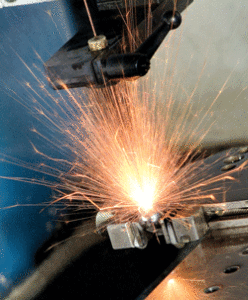Using a Metal Probe in Electronics and Medical Research
There are a lot of different materials to choose from when you are designing a metal probe. If you follow our blog, you know we’ve talked before about the use of tungsten wire for probes, in everything from medical device applications to integrated circuit testing. Across the board, these and other precision applications require that a metal probe have a very small diameter — smaller even than you might think possible — yet be strong enough to maintain its shape, straightness, and direction. Additionally, a use such as electronics testing or medical research requires a metal probe to meet other specific and fundamental needs:
- To be remote and traverse a particular distance
- To make a contact in order to carry a signal — usually electrical — through the metal probe wire
For these applications, a metal probe is often made from a precious metal — typically, a palladium-based alloy — beryllium copper, or various nickel-based alloys, as well as tungsten or rhenium tungsten. These materials are often made in proprietary blends to meet the needs of a specific metal probe application.
The Metal Probe in the World of Electronics
Wafer testing is a critical step in semiconductor device fabrication for electronics. Utilized for testing integrated circuit chips in a grid, it ensures that individual integrated circuits are tested for functional defects and that any circuits that fail can be eliminated before further expensive processing. Contact with the integrated circuit on the wafer is accomplished with a metal probe — most often, a set of probes arranged together on a probe card.
In the world of semiconductor testing, high performance is required to maintain quality control and high-volume production. Therefore, the metal probe material and form are chosen based on the technique and characteristics that are best suited to the particular application. The metal probe design must combine conductivity and rigidity to form a reliable electrical path with excellent force distribution and compliance.
The types of metal probe typically used in semiconductor testing include buckling beam (cobra), cantilever, and pogo pin and socket probes. Each metal probe must meet specifications for distance and pitch, requiring a particular length and diameter. For example, a palladium-based alloy that is engineered specifically for high conductivity and high hardness may be used for tight pitch applications where the current level remains high but the probe diameter is small.
There are also a variety of metal probe configurations, such as metal blade profiles commonly used in probe card assembly machines. Metal blade probes can be mounted with different needle styles and geometries based on the application.
As electronic devices and circuitry become smaller and smaller, whichever type of metal probe is used for semiconductor testing must deliver an increasingly smaller pitch and therefore, smaller diameter. In addition, because semiconductor probing is automated, length tolerance is also important – helping to ensure that each metal probe makes contact on the integrated circuit grid that is being tested. Therefore, when manufacturing a metal probe for use in electronics testing, repeatability in length cutoff is crucial.
The Metal Probe in the World of Research
Research techniques utilizing a metal probe have advanced our understanding of the brain and how networks of neurons function. A tungsten metal probe can be implanted in different areas of the brain to record and/or stimulate activity in specific sites. Probing can also be used for the diagnosis of disorders including seizures epilepsy, migraine, Alzheimer’s disease, and dementia. (Source: NCBI)
Whether used to explore or to deliver stimulation to the human brain, nerves, or other tissue, a metal probe used in medical research requires a very thin wire that is perfectly engineered for its application. For example, we mentioned that high repeatability of a precise length is important for a metal probe that will be used in semiconductor testing. However, when manufacturing a metal probe to be used in deep brain stimulation (DBS), it is mandatory that the probe tip absolutely not have any burrs or roughness. And the most important criteria is stiffness, to ensure that the target is reached exactly where the surgeon or researcher intends to deliver the metal probe tip.
Additionally for medical research, the metal probe must deliver a valid signal — and it must do so with no fracturing of the metal probe itself, to prevent damage to fragile tissue. And of course, the surface chemistry and biocompatibility of the materials used for the probe wire and blank must be considered when engineering a metal probe. For instance, fine platinum wire, which is known for its stable electrical and environmental properties, is widely used as a metal probe in sensors, medical devices, electrodes, and pin probes. Gold-plated tungsten, alloys of nickel, stainless steel, and beryllium copper are also used.
Design and Fabricate with Tolerances in Mind
We’ve barely probed the surface of everything there is to know about the metal probe. What we can say, simply, is that many different metals can be utilized to fashion a metal probe for use in applications including semiconductor testing and medical research. Beyond the choice of materials, careful engineering of the probe — with tight tolerances, as appropriate, on characteristics such as diameter, length, strength, and straightness — will help to assure that a probe is fabricated correctly and will deliver the best results.
Want to learn more about which fabrication method might be right for your application — and your tolerances? Get a free copy of our guide to comparing precision cutting methods.






